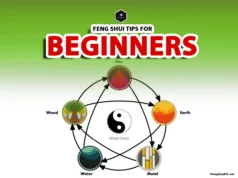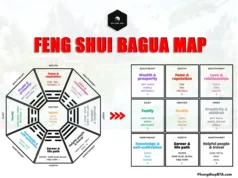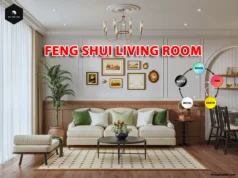Creating a feng shui kitchen brings balance, nourishment, and prosperity to your home. As the heart of the house, the kitchen channels energy where food and family connect.
This BTA Feng Shui guide shows how to optimize Qi through layout, colors, elements, and decor for a space filled with positive energy.
Why Feng Shui Matters in the Kitchen
In feng shui, the kitchen symbolizes nourishment and prosperity, directly influencing the well-being of the household. A well-designed kitchen fosters family connection, supports health, and attracts wealth.
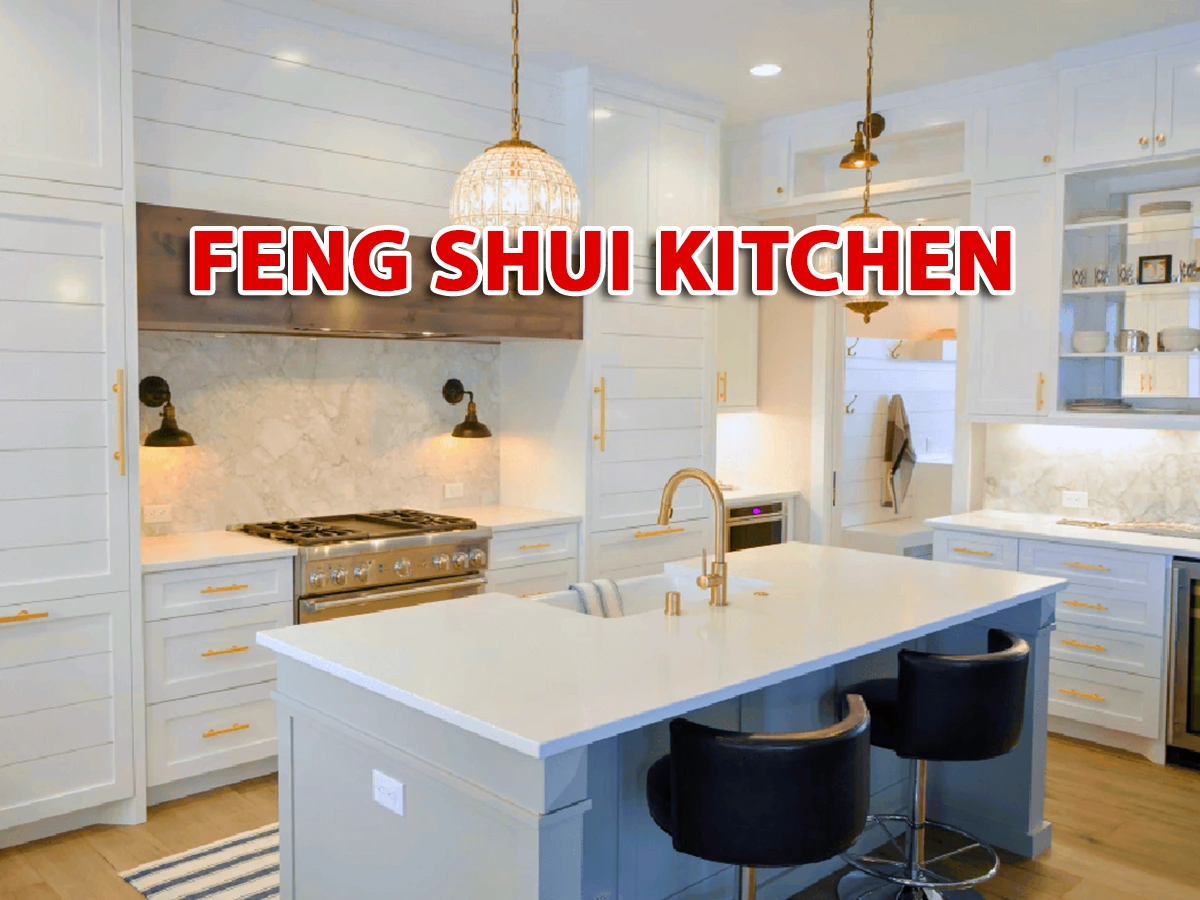
By thoughtfully arranging appliances, choosing harmonious colors, and incorporating the five elements—Wood, Fire, Earth, Metal, and Water—you create a space that feels balanced and vibrant.
Below, we explore key feng shui principles to elevate your kitchen’s energy.
Optimal Kitchen Location
The placement of your kitchen within the home sets the foundation for good feng shui. Ideally, the kitchen should not be at the center of the house, as this represents the heart of the home, which requires calm energy.
A central kitchen can overheat the home’s energy, leading to stress or financial strain. Instead, position the kitchen toward the back of the house to encourage guests to linger and to protect the home’s wealth from being too exposed at the entry.
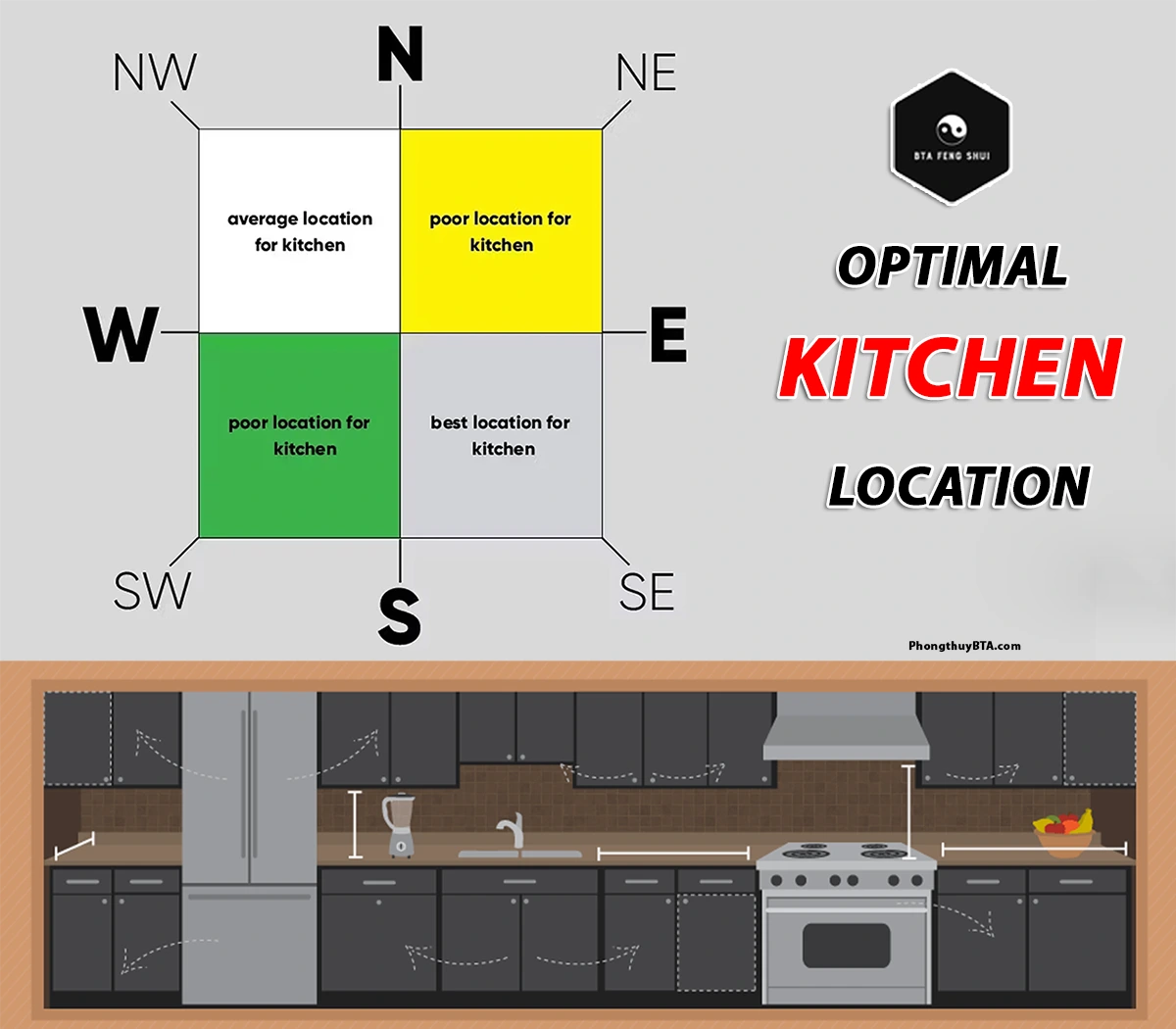
If your kitchen faces the front door, it may allow positive Qi to escape, symbolizing a loss of wealth. To remedy this, consider using a screen or partition to shield the kitchen from direct view. For those designing a new home, prioritize a layout that places the kitchen in a quieter, less exposed area.
Note: In feng shui, many believe your stove should face the same direction as your house—for example, a southwest-facing home aligns with a south-facing stove.
The Kitchen Triangle: Sink, Stove, and Refrigerator
A cornerstone of feng shui kitchen design is the kitchen triangle—the arrangement of the sink (Water), stove (Fire), and refrigerator (Metal). This layout ensures efficiency and balance. Experts recommend maintaining 6–8 feet of distance between each appliance to create a comfortable workflow without wasted movement.
- Stove Placement: The stove, representing Fire and wealth, is the heart of the kitchen. Position it so the cook faces the door, known as the commanding position, to maintain control and awareness of opportunities. If the stove faces a wall, hang a mirror above it to reflect the room, symbolically doubling wealth and allowing the cook to see behind them.
- Sink and Stove Separation: Since the sink (Water) and stove (Fire) represent conflicting elements, avoid placing them side by side. If unavoidable, place a Wood element (e.g., a green rug or wooden cutting board) between them to harmonize the energies, as Wood mediates between Water and Fire.
- Refrigerator Positioning: The refrigerator, tied to Metal, should be accessible but not dominate the space. Avoid placing it directly next to the stove to prevent elemental clashes.
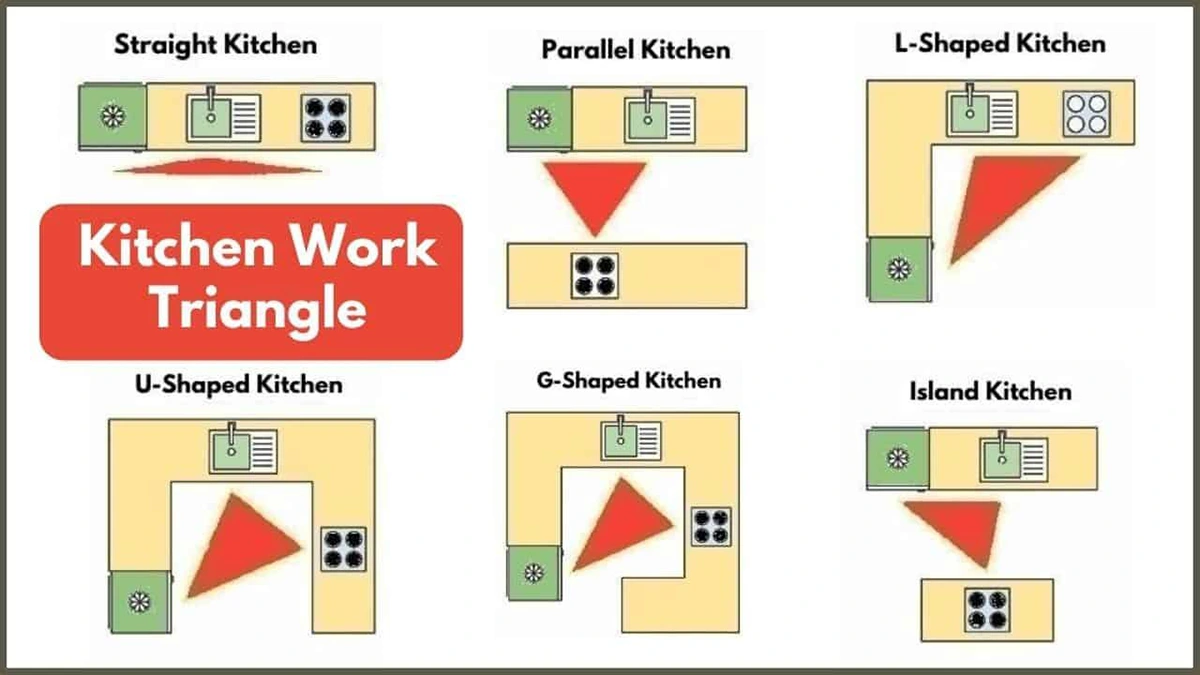
Balancing the Five Elements
Feng shui relies on the five elements to create harmony. Kitchens naturally feature Water (sink), Fire (stove), and Metal (appliances), so focus on incorporating Wood and Earth to balance the energy:
- Wood: Add wooden cabinets, butcher-block countertops, or potted herbs to symbolize growth and vitality. A small herb garden on a windowsill brings in living Wood energy.
- Earth: Use earthy materials like ceramic tiles, granite countertops, or terracotta decor to ground the space. Earth tones like beige or soft yellow enhance stability.
- Fire: The stove already provides Fire, but you can amplify it with red or orange accents, such as dishware or artwork, to boost passion and inspiration.
- Water: The sink fulfills this element, but blue or black decor can reinforce calm and wisdom.
- Metal: Stainless steel appliances or metallic hardware add precision and clarity. White or gray accents also represent Metal.
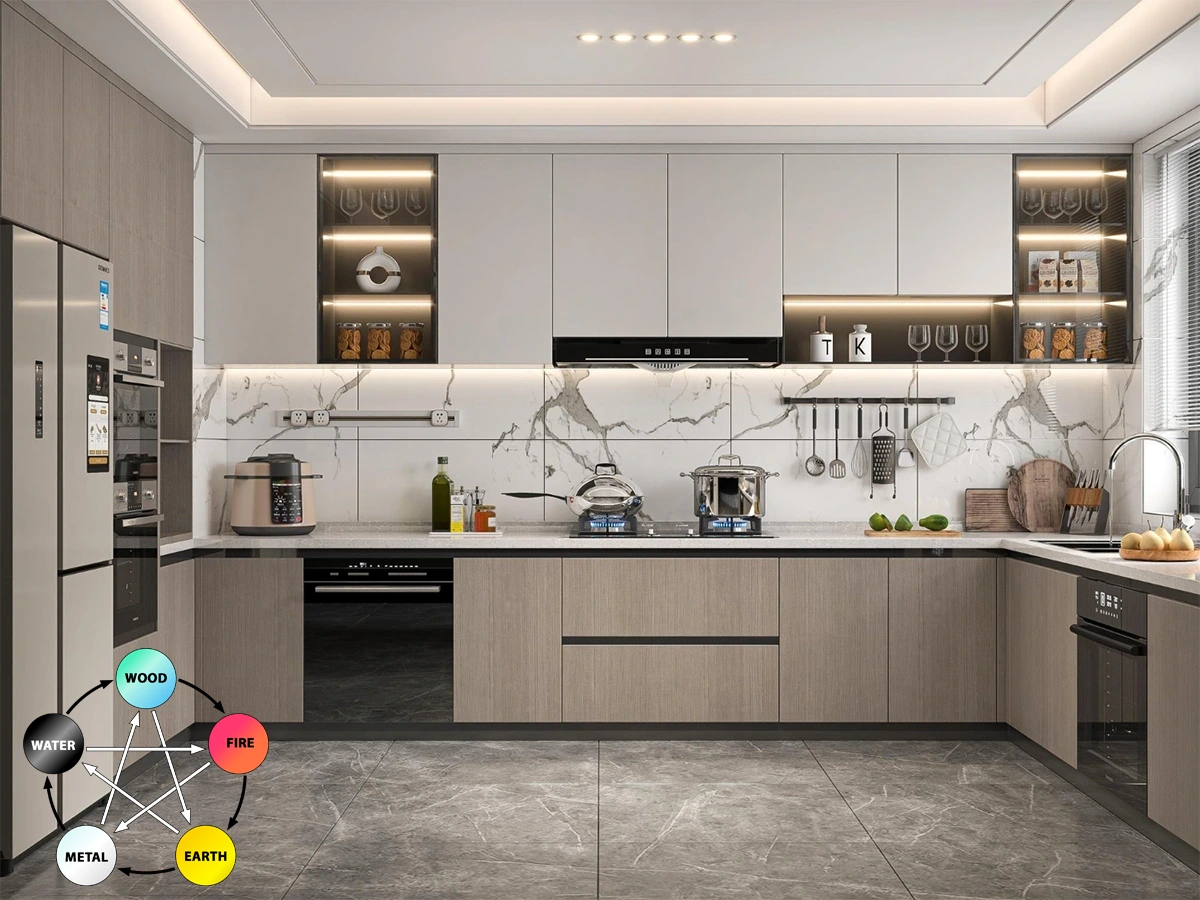
Ensure no single element overwhelms the others. For example, a kitchen heavy in Fire and Water needs more Wood and Earth to create equilibrium.
Feng Shui Kitchen Colors
Color plays a vital role in shaping a kitchen’s energy. Choose a palette that aligns with the kitchen’s location in the Bagua (feng shui energy map) and balances the elements:
- White: Represents purity and Metal, ideal for cleanliness and clarity. Use white for walls or cabinetry to create a serene, open feel.
- Earth Tones (Beige, Brown, Yellow): Ground the space and promote nourishment. These are excellent for countertops or flooring.
- Green or Blue: Linked to Wood and Water, these colors foster growth and calm. Use them for accents like curtains or dishware.
- Red or Orange: Fire colors that spark energy and passion. Use sparingly in the Wealth (Southeast) or Fame (South) sectors of the Bagua to avoid overwhelming the space.
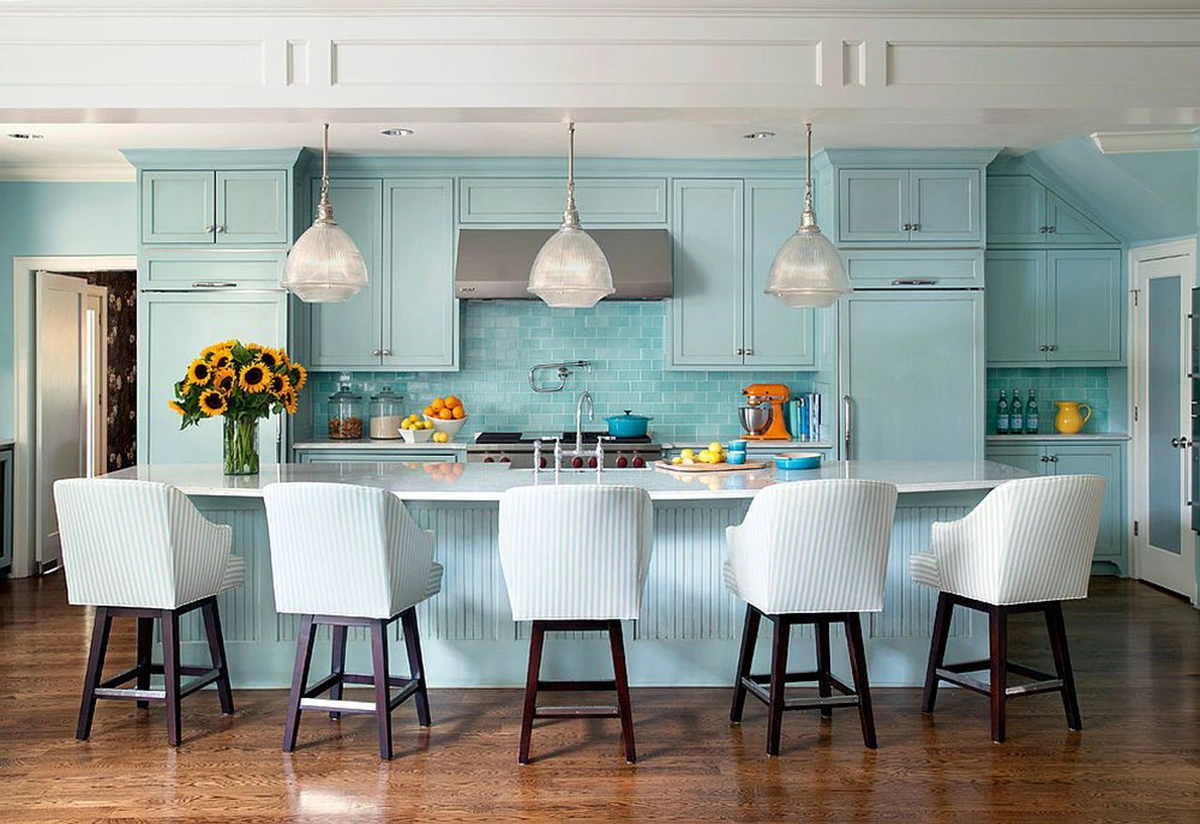
Avoid overly dark or chaotic color schemes, as they can disrupt Qi flow. If your kitchen is in the Wealth sector (Southeast), incorporate purples or blues to enhance prosperity. For a kitchen in the Family sector (East), greens and browns support harmony.
Lighting for Positive Energy
Lighting is a powerful tool in feng shui, representing Yang energy that energizes the cook and enhances clarity. Combine multiple lighting types for balance:
- Natural Light: A window near the sink or stove invites vibrant Qi and connects the kitchen to the outdoors.
- Task Lighting: Under-cabinet lights ensure clear visibility for food preparation, lifting the mood.
- Ambient Lighting: Dimmable overhead lights allow you to adjust the atmosphere, fostering flexibility.
- Accent Lighting: Small lamps or decorative fixtures add warmth and beauty, enhancing the kitchen’s welcoming feel.
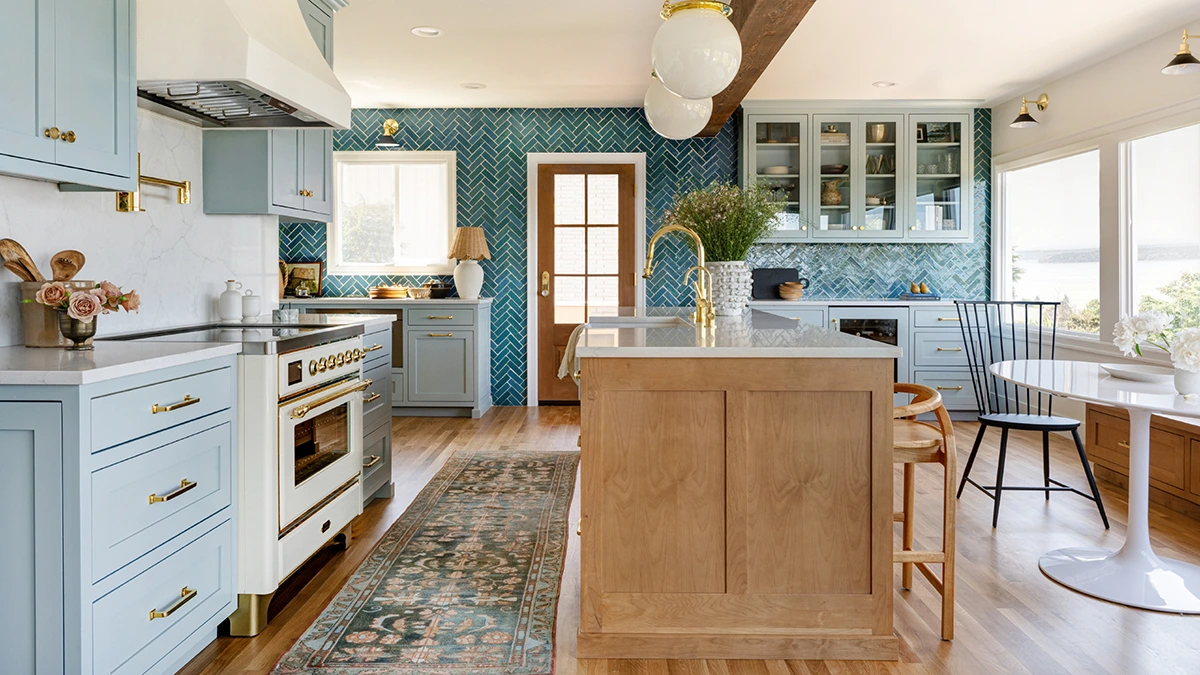
Avoid harsh fluorescent lights, which can create sterile energy. Opt for warm-toned bulbs to nurture a cozy, inviting space.
Decluttering and Organization
A clutter-free kitchen is essential for good feng shui, as clutter blocks Qi and creates stagnation. Regularly clean and organize:
- Pantry and Cabinets: Remove expired items and keep shelves tidy. An organized pantry reflects abundance and clarity.
- Countertops: Keep them clear except for intentional decor, like a bowl of nine oranges or lemons, symbolizing luck and prosperity.
- Appliances: Ensure all appliances, especially the stove, are in working order. Broken items symbolize disrupted energy.
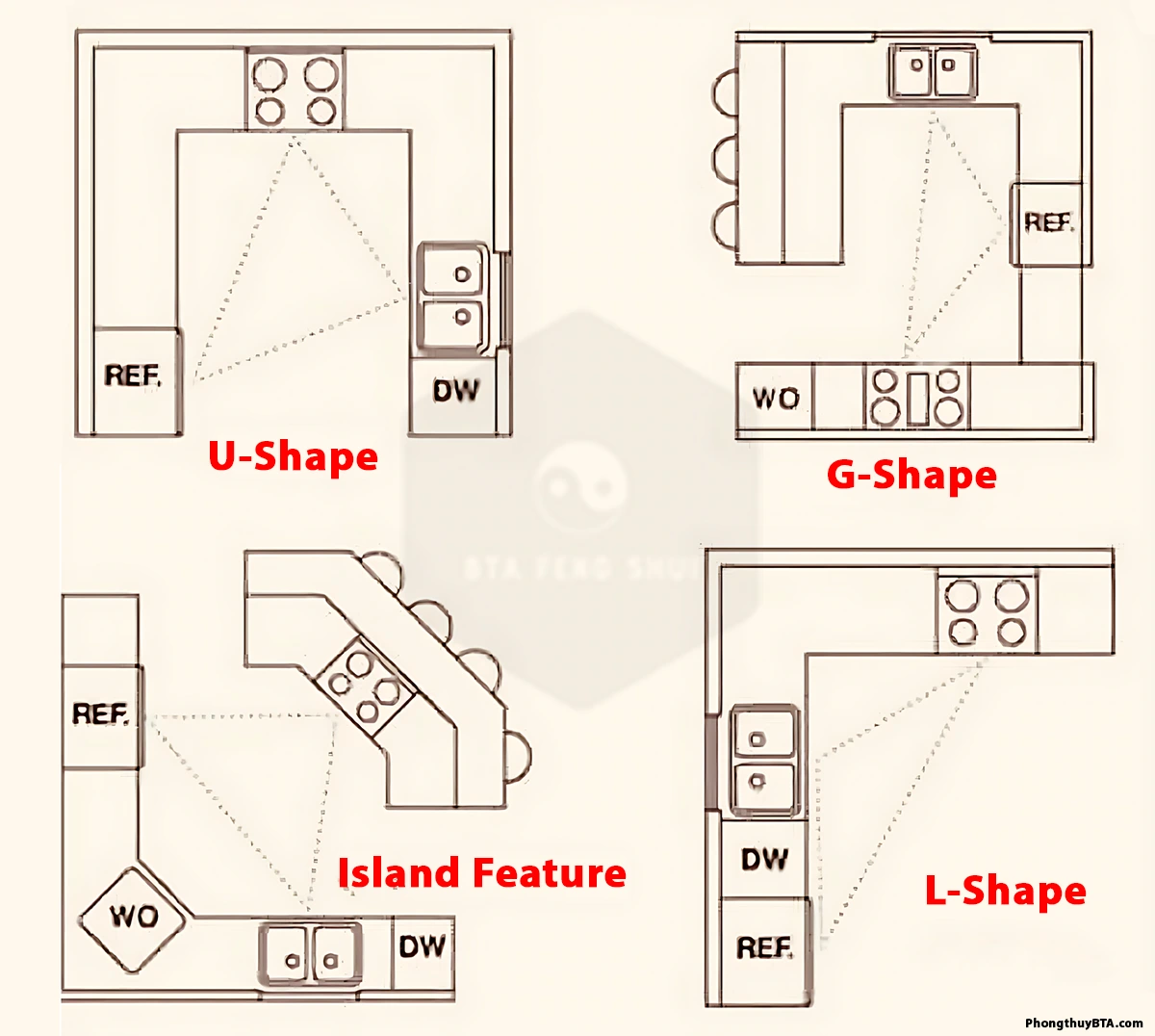
Use non-toxic cleaners to maintain a healthy environment, aligning with feng shui’s emphasis on purity and well-being.
Decor and Symbolism
Thoughtful decor enhances the kitchen’s energy and aesthetic:
- Plants: Fresh herbs or lush greenery bring Wood energy and vitality. Avoid dried flowers or cacti, which represent stagnant or sharp energy.
- Art: Choose food-inspired artwork, such as images of fruits or communal meals, to promote abundance and togetherness.
- Mirrors: Place a mirror behind the stove to double wealth or in areas reflecting food to symbolize plenty. Avoid mirrors facing the stove directly, as they can amplify Fire energy excessively.
- Fruit Bowls: A bowl of nine citrus fruits on the counter symbolizes abundance and good fortune.
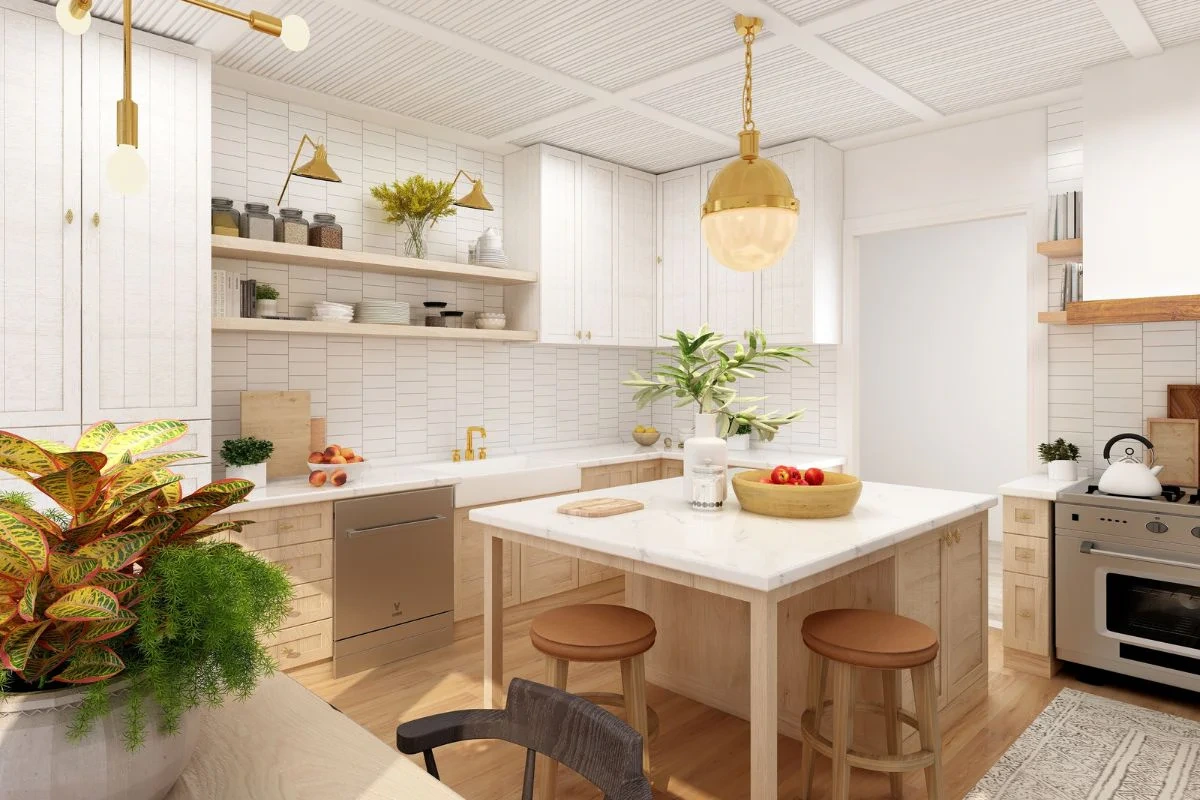
Avoid sharp objects like knives on display, as they can introduce Sha Qi (negative energy). Store them in drawers or use a knife block.
Common Feng Shui Mistakes to Avoid
To maintain positive energy, steer clear of these pitfalls:
- Kitchen at the Front Door: This exposes wealth and allows Qi to escape. Use a screen or partition if unavoidable.
- Stove Facing a Wall: This limits the cook’s awareness. A mirror above the stove remedies this.
- Cluttered Spaces: Messy countertops or cabinets disrupt energy flow. Regular decluttering is key.
- Broken Items: Chipped dishes or malfunctioning appliances symbolize broken energy. Repair or replace them.
- Overhead Fans: Fans with exposed blades can create cutting energy. Opt for paddle-style or upright fans.
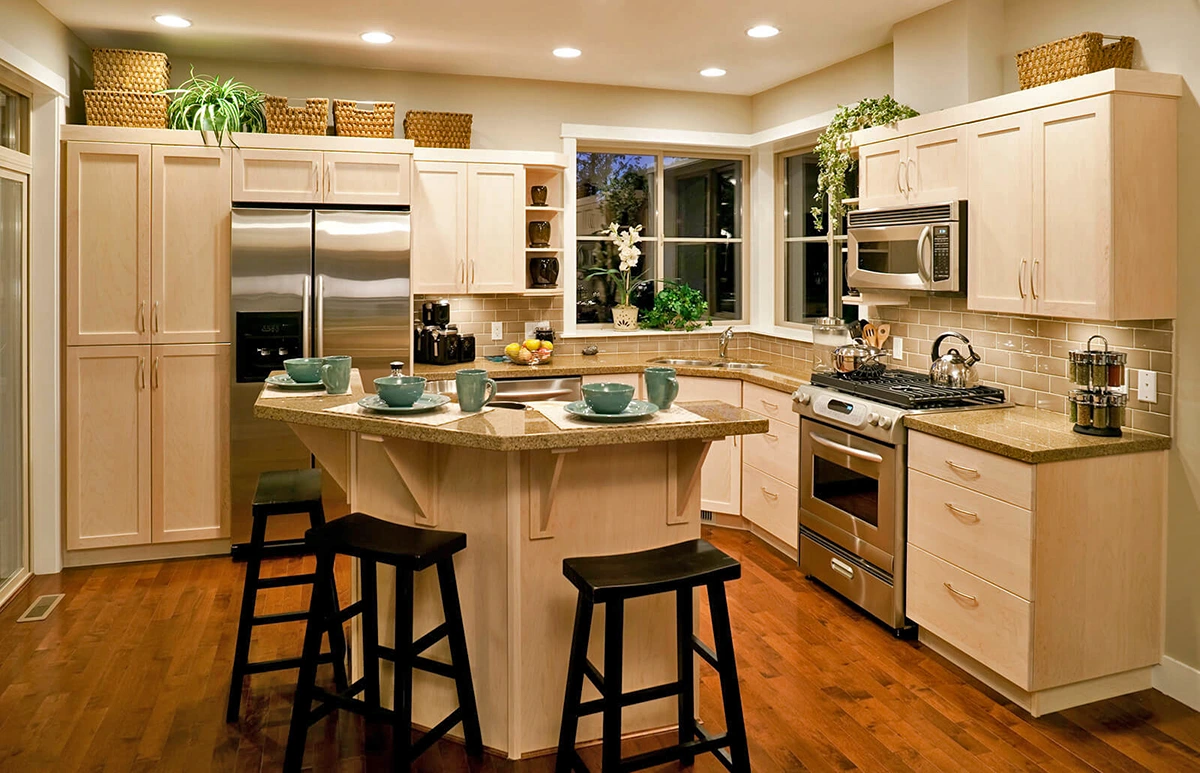
Read more:
- Feng Shui Living Room: Ultimate Guide to Harmony and Prosperity
- Feng Shui Bedroom: 13 Taboos That Drain Your Prosperity
Advanced Feng Shui: The Bagua Map
For a deeper approach, apply the Bagua map to your kitchen. This feng shui tool divides a space into nine sectors, each tied to an aspect of life (e.g., Wealth, Health, Relationships). Use a compass to align the Bagua with your home’s floor plan, then enhance the kitchen’s sector with appropriate colors and elements:
- Wealth (Southeast): Use purples, blues, or Wood elements like plants to boost prosperity.
- Health (East): Incorporate greens and browns to support vitality.
- Relationships (Southwest): Add pinks or Earth elements like ceramics for harmony.
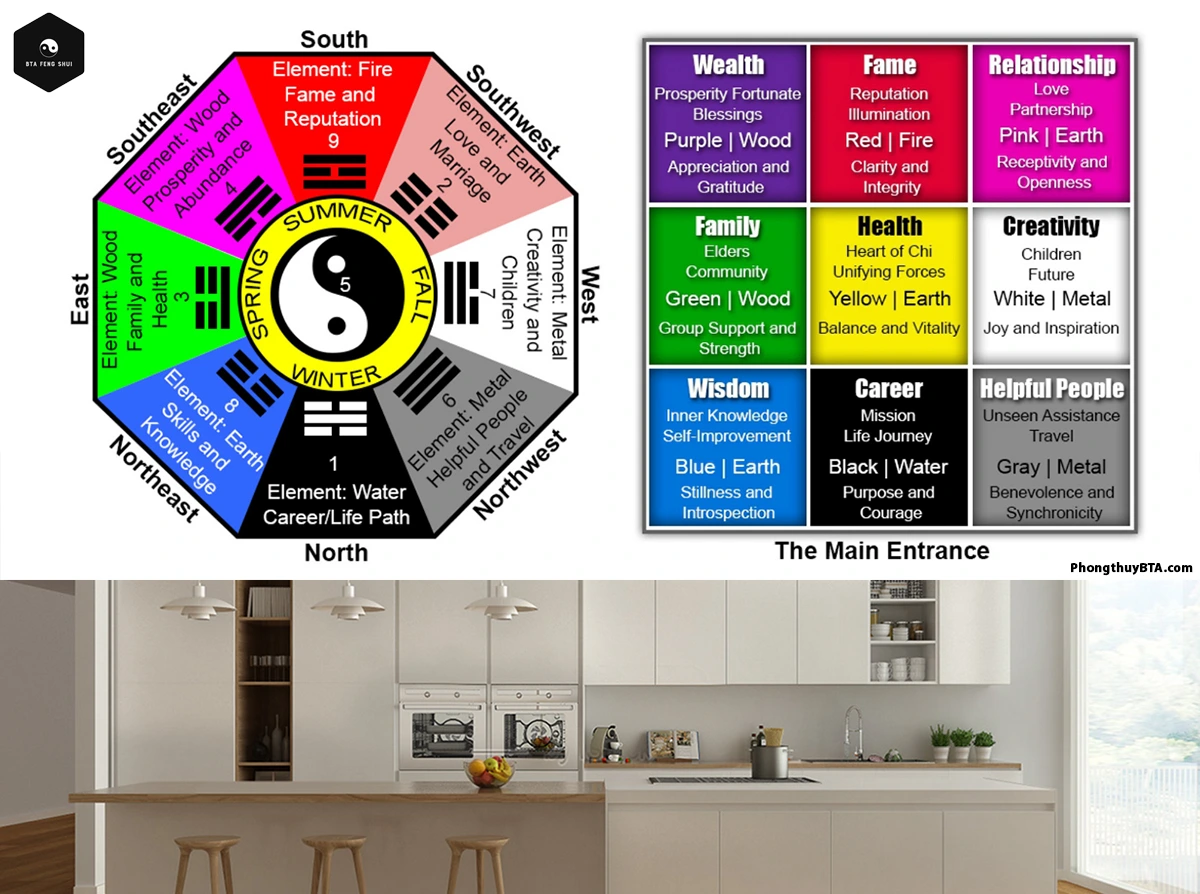
Note: Consult a feng shui expert to map your home accurately and provide recommendations tailored to your space.
Practical Tips for Small Kitchens
Even in compact kitchens, feng shui can work wonders:
- Maximize Light: Use mirrors or glossy surfaces to reflect light and create a sense of space.
- Simplify Decor: Focus on one or two meaningful items, like a small plant or a vibrant painting, to avoid clutter.
- Organize Efficiently: Use vertical storage or glass-fronted cabinets to open up the space and promote Qi flow.
A feng shui kitchen is a space of nourishment, harmony, and abundance. With balanced elements, thoughtful colors, and organized design, you can create positive energy that transforms your home and life. If you found this BTA Feng Shui guide helpful, please rate it 5 stars and share it!



